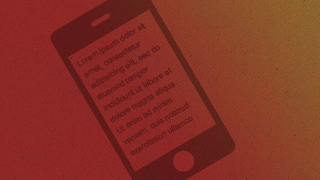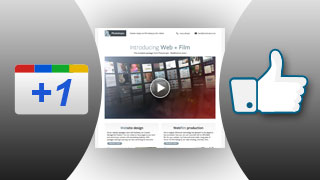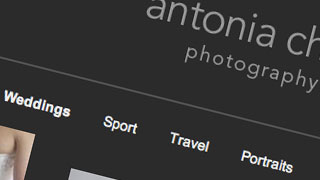Why you don't need a separate mobile website
Monday, October 15, 2012 at 08:25AM
Tags:
webdesign,
cms,
setseed,
mobile
Filed in: Website design
Read and add comments (0)

I've noticed a lot of web designers are touting a 'mobile website' as an up-sell or separate service.
I think this is not only damaging the customer's online presence but also reflects badly on the web design industry itself.
I'm referring specifically to a separate mobile website that is built alongside your current website and requires it's own content, and therefore it's own administration. This is clearly a bad idea. You'll need to update your content in two places and more significantly your clients will experience a cut-down version of your original site.
I think the reason business are pushing this as a service is because a separate mobile site is quick and cheap to build. It only needs to work on mobiles, will contain very little content, and always has the desktop site as fallback for any inadequacies.
So how do you improve your mobile visitors' experience?
The answer is by using a 'responsive design'. This is a new technique used by the best web developers to create websites that work perfectly on all devices, including mobiles, tablets and desktops.
The brilliant thing about a responsive website is the mobile visitors to your site see the exact same content as your desktop site. All your content is gracefully reformatted and optimised for display on small screens.
If you're using a CMS like SetSeed to manage your content, you only need to change it once and visitors on any device will see your latest version.
The problem with responsive designs is they are fairly complex to build and execute well. More importantly, if you've had a website built recently, you might need to have certain parts of it altered to allow it to become responsive. If your original developer isn't willing to do this, another developer might prefer to start from scratch rather than working with your existing site.
This, understandably, is going to result in a reluctance for people to upgrade their websites to become responsive and, even worse, consider adding a cheap separate mobile site instead.
In summary: If you're looking to buy a new website now, make sure you specify it to be built using responsive techniques, and be prepared to pay a bit more for it. Rest assured it will be a wise investment. Mobile and tablet browsing is only going to get more prevalent. If you've recently had non-responsive website built, prepare to pay for a responsive rebuild and don't spend money on a separate mobile version - it's just false economy.
Do you need a website as well as social media?
Tuesday, November 15, 2011 at 10:10AM
Tags:
webdesign,
seo,
social media
Filed in: Website design
Read and add comments (0)
This article is going to look at the differing roles of social media and your website. We’ll explore the difference between the two as well as looking at the overriding importance of your website.

TV ads and Facebook 'Pages'
You may have noticed many big companies showing Facebook page addresses at the end of their TV ads, where once there would have been their own website displayed. On the surface, this appears as though the Facebook page has effectively replaced the website.
What's actually happening is that these companies are running a specific campaign which aims to harness the viral power of social media to increase the reach of their ads. They will more than likely be using an advanced landing page on their Facebook page to obtain email addresses as well as other mechanisms to incentivise people to share and talk about their product.
What's happening is that social media is being used as a multiplier of the effectiveness of a specific marketing campaign. Once upon a time, an ad would have a goal of getting a new customer to buy a product or at least visit a website, now the idea is to generate social hype about the product, which will in turn result in more sales.
What's more, all traffic that goes through the social media channels will have an easy path to return to the company's actual website where they can invest further in the brand and product as well as actually buying the product, or finding out where they can buy the product.
The important difference between big companies and the 'small business'
It is important to remember the big difference between these large national companies and a small business in terms of how their products are sold. If a product is available to buy off-the-shelf in high street shops and supermarkets, then the aim of the marketing is to ensure a customer chooses that product over their competitors as they are walking down the isle. This is why brand reinforcement is so important. Social media is particularly effective at this because a large part of this sort of marketing is reassuring people that many other people are also making the same choice.
If you're a small business, however, things are quite different. If you're selling a product you're most likely going to be selling that product on your website. For you then, the role of your own website is quite clear. You can use social media to attract more interest in your product and use it as a marketing channel, but you'll still need those people to end up on your website to make a purchase.
But what about if you're selling a service? In your case, your online goal isn't the sale of a product, it is lead generation. A 'lead' is someone who makes contact with you and will potentially use your service. If your business works like this, you might be starting to think that an active social media presence might be sufficient at achieving this. After all, social media makes it very easy for people to get in touch with you.
However, if we explore why people actually use social media we'll see why this wouldn't be nearly as effective as if you combined it with a real-world website.
Can small business still use social media 'Pages'?
Absolutely, yes. Facebook and Google+ 'Pages' are still a great way for small businesses to represent themselves on social media. In their basic format though, they are still very similar to a normal personal page. That is, they include a list of shared links or messages.
Although they do have a handy way of listing key information about your business using the profile fields, this is of course no substitute for actually publishing quality content on your own website.
One of the main differences between a 'Page' and a normal personal account on social media sites is that the 'Pages' are inherently more public. Information is public by default and there is no need to become 'friends' before you can view content from a 'Page'.
Other than that and a few other technical differences, the format is essentially the same.
The social media format
Social media is effectively a micro-blogging platform designed for sharing content and short messages. We can broadly classify the vast majority of social media content as either a brief message (or 'status'), or a link to larger content elsewhere.
The people who use social media use it because they enjoy being shown content from those who they respect enough to 'follow/like/add'. There is so much content out there these days that people are waiting for content to be recommended to them as a way of filtering the pages, articles, images and video they want to view.
In many ways this process is a refreshing and natural return to the old fashioned way of recommending people and things to others. Instead of relying on a search engine to discover who is trustworthy (and lets face it, there's a limit to how effective a search engine can be), people are using other people's experience and recommendations as a starting point for their online exploration.
Social media is for sharing, not publishing
So, in summary, it's important to remember that the main role of social media is to share content, not publish it. For that, you still need a great website. In fact, a good quality website has never been more important if you want others to share your content.
Quick guide to ‘Like-gate’ or ‘Fan-gate’ pages on Facebook
Wednesday, November 9, 2011 at 07:53PM
Tags:
facebook,
webdesign,
social media
Filed in: Website design
Read and add comments (0)
If you've visited any cool Facebook pages recently, you'll probably have landed on a special tab within the page offering a juicy incentive to 'Like' the page.

Once you do that, you'll be thanked with another page and then rewarded for your good deed.
In short, the page knows if you've 'Liked' it and shows you different content accordingly. This is called a 'Like-gate' or 'Fan-gate'.
Incentives can range from free content to competitions and discounts. Obviously the trick here is to use a mechanism that justifies collecting their name and email address. This is why competitions are effective. People associate giving their name and email address with entering a competition (how else would they expect to be notified of winning?) so won't mind doing so after 'Liking' your page.
Here are some possible ideas to get you started:
- Not-liked see: "Like us to get free access to exclusive content" (ebook, article, video etc).
Liked see: "Enter your email address to receive the content (or username/password to access content). - Not-liked see: "Like us to enter our competition for a chance to win (something cool)."
Liked see: "Enter your email address so we can notify you". - Not-liked see: "Like us to get £20 off your next purchase"
Liked see: "Enter your email address to receive discount coupon."
The idea with a 'Like-gate' page is that you only need to show the visitor the competition signup page once they've clicked the 'Like' button - this makes the whole thing much more like a reward and far less daunting. The Facebook technology that allows this to happen is what makes the approach so effective.
What you're effectively doing is making the competition exclusive, i.e only to people who've 'Liked' the page, but also effectively only once they give you their email address.
The great thing is that Facebook lets you set this tab as the default 'landing tab' for new visitors to your page, so your competition, or other incentive, can be the first thing your visitors see.
Remember this is a simple case of effort and reward. You should ensure the reward outweighs the effort it takes to click the 'like' button (and enter their email address).
You might be wondering how to set this up on your own Facebook page. The problem is, it's pretty tricky. There are some 'apps' you can use (many are subscription-based) but if you want to come up with something that looks totally branded, and exactly what you're after, you'll probably need to enlist a web developer to build the tab for you.

 Filtering email spam without risk of false positives
Filtering email spam without risk of false positives Why you don't need a separate mobile website
Why you don't need a separate mobile website Great crested grebe footage used in BBC's Natural World
Great crested grebe footage used in BBC's Natural World 4 Quick Ways to Improve your Website Content Writing
4 Quick Ways to Improve your Website Content Writing Website Design Primer: Common Concepts and Jargon Explained
Website Design Primer: Common Concepts and Jargon Explained New webfilm production: Beer YHA
New webfilm production: Beer YHA New SetSeed powered website design: Antonia Chick Photography
New SetSeed powered website design: Antonia Chick Photography 6 Steps to Improving Search Engine Ranking for Beginners
6 Steps to Improving Search Engine Ranking for Beginners



